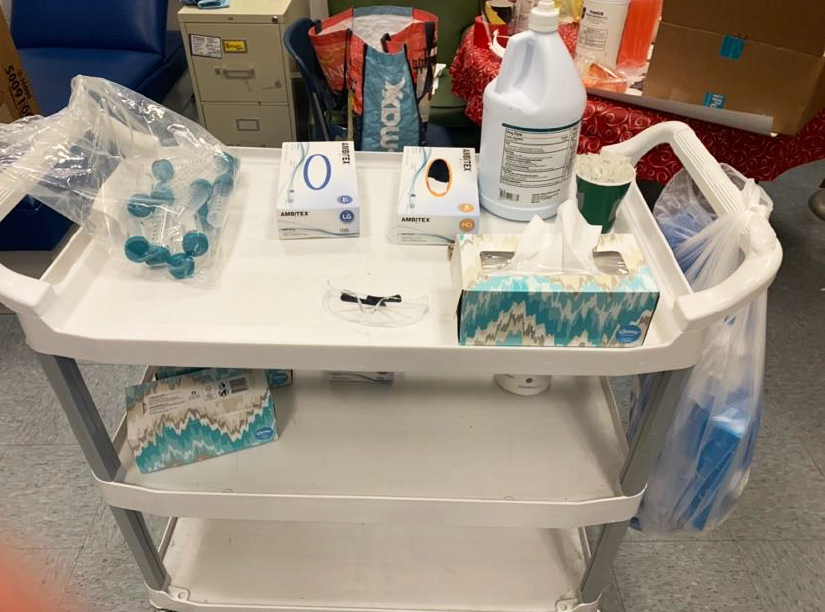Case Study:
Pooled Testing in Watertown Public Schools
Click to jump to details about…
In a new episode of episode of Catalysts for Change, the Shah Foundation’s Jill Shah talks to Deanne Galdston, Superintendent of Watertown Public Schools. As more and more school districts in Massachusetts begin to reopen their schools, Superintendent Galdston talks to us about Watertown Public Schools’ COVID-19 surveillance testing program and how they successfully and safely brought students back to school.
Pooled Testing Program Weekly Schedule
How does it work?
Watertown uses a hybrid schedule, swab or front-end pooling. with PCR follow-up. Teachers are tested with individual PCRs at the Middle School Testing Site.
Weekly student testing has been in place since the beginning of December. Participation started at 50% and has grown to 85-90%.
Staffing the Program, by School Building
Notes:
Program setup usually takes one full time person for 2-3 weeks, depending on speed of ramp up & size of district.
The above estimates 1 positive pool per school per week.
In Watertown, when participation scaled up from 50% to more than 85%, staff time did not expand proportionally.
Swab Collection Methods, by School
Method A (High School)
Student testing at front door station as they arrive; tested in random pools
8:00am - 8:30am
Lunch Time: Pool testing for late arriving students
Staff
1 trained observer monitors swabbing
1 additional staff member records names on spreadsheet and matches to tube by scanning barcode
Testing Rate
180 students can be swabbed in the 30 minute morning period.
STEP 1
Staff record name on spreadsheet and scans barcode on tube
STEP 2
Student self-swabs under observation and places swab in tube
STEP 3
Student sanitizes hands and goes to class
Why this method?
Watertown used to test high school students at lunch, but they didn’t always show up. The testing team found it was more reliable and easier to test students as they arrive in the AM; it also gets samples out the door to the lab earlier in the day. Because high school students don’t attend classes in dedicated pods (they mix between classes), the pools do not need to be the same each week. Testing in random pools requires a staff member to scan barcodes to record who is in each pool.
Method B (Middle School)
Student testing at mask break; tests pooled by classroom
10:00am - 11:00am
Tubes are pre-labeled by classroom
Staff
1 trained observer monitors swabbing
Testing Rate
Swabbing takes a matter of seconds per student
STEP 1
Students line up by class
STEP 2
Student self-swabs under observation and places swab in tube
STEP 3
Student sanitizes hands and goes outdoors for a mask break
Why this method?
Middle-schoolers attend class in dedicated pods, so their pooled groups should stay the same each week. Most middle-school students can swab their own noses. The testing team found it was most efficient to have students self-swab at a testing station on their way out the door for a mask break. This way the testing didn’t interfere with instructional time and could be conducted outside.
Method C (Elementary School):
Student testing in school hallway; tests pooled by classroom
9:00am - 11am
Tubes are pre-labeled by classroom
Staff Needed:
1 trained staff member travels corridors with a cart, stopping outside each classroom
Testing Rate:
3-5 minutes per classroom.
STEP 1
Cart arrives outside of classroom. Students signed up for testing come into the hallway and line up
STEP 2
One by one, students self-swab under observation and place swab in tube. Grades 2+ self-swab; grades K-1 may require assistance
STEP 3
Student sanitizes hands and goes to class
Why this method?
Elementary school students are grouped by learning pod, so pools should stay the same each week. In addition, many students at this level need assistance swabbing themselves. Watertown found that it was quickest and easiest to have nurses travel the corridors with a testing cart, stopping by each classroom for 3-5 minutes to take samples.




